Anshul Thakur
RiskAgent: Autonomous Medical AI Copilot for Generalist Risk Prediction
Mar 05, 2025Abstract:The application of Large Language Models (LLMs) to various clinical applications has attracted growing research attention. However, real-world clinical decision-making differs significantly from the standardized, exam-style scenarios commonly used in current efforts. In this paper, we present the RiskAgent system to perform a broad range of medical risk predictions, covering over 387 risk scenarios across diverse complex diseases, e.g., cardiovascular disease and cancer. RiskAgent is designed to collaborate with hundreds of clinical decision tools, i.e., risk calculators and scoring systems that are supported by evidence-based medicine. To evaluate our method, we have built the first benchmark MedRisk specialized for risk prediction, including 12,352 questions spanning 154 diseases, 86 symptoms, 50 specialties, and 24 organ systems. The results show that our RiskAgent, with 8 billion model parameters, achieves 76.33% accuracy, outperforming the most recent commercial LLMs, o1, o3-mini, and GPT-4.5, and doubling the 38.39% accuracy of GPT-4o. On rare diseases, e.g., Idiopathic Pulmonary Fibrosis (IPF), RiskAgent outperforms o1 and GPT-4.5 by 27.27% and 45.46% accuracy, respectively. Finally, we further conduct a generalization evaluation on an external evidence-based diagnosis benchmark and show that our RiskAgent achieves the best results. These encouraging results demonstrate the great potential of our solution for diverse diagnosis domains. To improve the adaptability of our model in different scenarios, we have built and open-sourced a family of models ranging from 1 billion to 70 billion parameters. Our code, data, and models are all available at https://github.com/AI-in-Health/RiskAgent.
Surveying Facial Recognition Models for Diverse Indian Demographics: A Comparative Analysis on LFW and Custom Dataset
Dec 11, 2024Abstract:Facial recognition technology has made significant advances, yet its effectiveness across diverse ethnic backgrounds, particularly in specific Indian demographics, is less explored. This paper presents a detailed evaluation of both traditional and deep learning-based facial recognition models using the established LFW dataset and our newly developed IITJ Faces of Academia Dataset (JFAD), which comprises images of students from IIT Jodhpur. This unique dataset is designed to reflect the ethnic diversity of India, providing a critical test bed for assessing model performance in a focused academic environment. We analyze models ranging from holistic approaches like Eigenfaces and SIFT to advanced hybrid models that integrate CNNs with Gabor filters, Laplacian transforms, and segmentation techniques. Our findings reveal significant insights into the models' ability to adapt to the ethnic variability within Indian demographics and suggest modifications to enhance accuracy and inclusivity in real-world applications. The JFAD not only serves as a valuable resource for further research but also highlights the need for developing facial recognition systems that perform equitably across diverse populations.
Efficient Task Grouping Through Samplewise Optimisation Landscape Analysis
Dec 05, 2024Abstract:Shared training approaches, such as multi-task learning (MTL) and gradient-based meta-learning, are widely used in various machine learning applications, but they often suffer from negative transfer, leading to performance degradation in specific tasks. While several optimisation techniques have been developed to mitigate this issue for pre-selected task cohorts, identifying optimal task combinations for joint learning - known as task grouping - remains underexplored and computationally challenging due to the exponential growth in task combinations and the need for extensive training and evaluation cycles. This paper introduces an efficient task grouping framework designed to reduce these overwhelming computational demands of the existing methods. The proposed framework infers pairwise task similarities through a sample-wise optimisation landscape analysis, eliminating the need for the shared model training required to infer task similarities in existing methods. With task similarities acquired, a graph-based clustering algorithm is employed to pinpoint near-optimal task groups, providing an approximate yet efficient and effective solution to the originally NP-hard problem. Empirical assessments conducted on 8 different datasets highlight the effectiveness of the proposed framework, revealing a five-fold speed enhancement compared to previous state-of-the-art methods. Moreover, the framework consistently demonstrates comparable performance, confirming its remarkable efficiency and effectiveness in task grouping.
F$^3$OCUS -- Federated Finetuning of Vision-Language Foundation Models with Optimal Client Layer Updating Strategy via Multi-objective Meta-Heuristics
Nov 17, 2024



Abstract:Effective training of large Vision-Language Models (VLMs) on resource-constrained client devices in Federated Learning (FL) requires the usage of parameter-efficient fine-tuning (PEFT) strategies. To this end, we demonstrate the impact of two factors \textit{viz.}, client-specific layer importance score that selects the most important VLM layers for fine-tuning and inter-client layer diversity score that encourages diverse layer selection across clients for optimal VLM layer selection. We first theoretically motivate and leverage the principal eigenvalue magnitude of layerwise Neural Tangent Kernels and show its effectiveness as client-specific layer importance score. Next, we propose a novel layer updating strategy dubbed F$^3$OCUS that jointly optimizes the layer importance and diversity factors by employing a data-free, multi-objective, meta-heuristic optimization on the server. We explore 5 different meta-heuristic algorithms and compare their effectiveness for selecting model layers and adapter layers towards PEFT-FL. Furthermore, we release a new MedVQA-FL dataset involving overall 707,962 VQA triplets and 9 modality-specific clients and utilize it to train and evaluate our method. Overall, we conduct more than 10,000 client-level experiments on 6 Vision-Language FL task settings involving 58 medical image datasets and 4 different VLM architectures of varying sizes to demonstrate the effectiveness of the proposed method.
All models are local: time to replace external validation with recurrent local validation
May 13, 2023Abstract:External validation is often recommended to ensure the generalizability of ML models. However, it neither guarantees generalizability nor equates to a model's clinical usefulness (the ultimate goal of any clinical decision-support tool). External validation is misaligned with current healthcare ML needs. First, patient data changes across time, geography, and facilities. These changes create significant volatility in the performance of a single fixed model (especially for deep learning models, which dominate clinical ML). Second, newer ML techniques, current market forces, and updated regulatory frameworks are enabling frequent updating and monitoring of individual deployed model instances. We submit that external validation is insufficient to establish ML models' safety or utility. Proposals to fix the external validation paradigm do not go far enough. Continued reliance on it as the ultimate test is likely to lead us astray. We propose the MLOps-inspired paradigm of recurring local validation as an alternative that ensures the validity of models while protecting against performance-disruptive data variability. This paradigm relies on site-specific reliability tests before every deployment, followed by regular and recurrent checks throughout the life cycle of the deployed algorithm. Initial and recurrent reliability tests protect against performance-disruptive distribution shifts, and concept drifts that jeopardize patient safety.
Is dataset condensation a silver bullet for healthcare data sharing?
May 05, 2023Abstract:Safeguarding personal information is paramount for healthcare data sharing, a challenging issue without any silver bullet thus far. We study the prospect of a recent deep-learning advent, dataset condensation (DC), in sharing healthcare data for AI research, and the results are promising. The condensed data abstracts original records and irreversibly conceals individual-level knowledge to achieve a bona fide de-identification, which permits free sharing. Moreover, the original deep-learning utilities are well preserved in the condensed data with compressed volume and accelerated model convergences. In PhysioNet-2012, a condensed dataset of 20 samples can orient deep models attaining 80.3% test AUC of mortality prediction (versus 85.8% of 5120 original records), an inspiring discovery generalised to MIMIC-III and Coswara datasets. We also interpret the inhere privacy protections of DC through theoretical analysis and empirical evidence. Dataset condensation opens a new gate to sharing healthcare data for AI research with multiple desirable traits.
Data Encoding For Healthcare Data Democratisation and Information Leakage Prevention
May 05, 2023Abstract:The lack of data democratization and information leakage from trained models hinder the development and acceptance of robust deep learning-based healthcare solutions. This paper argues that irreversible data encoding can provide an effective solution to achieve data democratization without violating the privacy constraints imposed on healthcare data and clinical models. An ideal encoding framework transforms the data into a new space where it is imperceptible to a manual or computational inspection. However, encoded data should preserve the semantics of the original data such that deep learning models can be trained effectively. This paper hypothesizes the characteristics of the desired encoding framework and then exploits random projections and random quantum encoding to realize this framework for dense and longitudinal or time-series data. Experimental evaluation highlights that models trained on encoded time-series data effectively uphold the information bottleneck principle and hence, exhibit lesser information leakage from trained models.
Adversarial De-confounding in Individualised Treatment Effects Estimation
Oct 19, 2022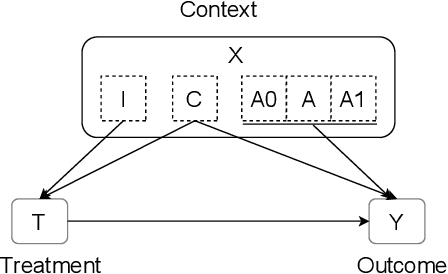
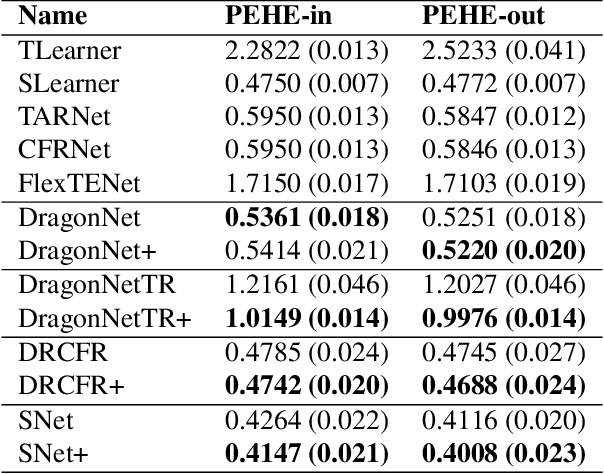
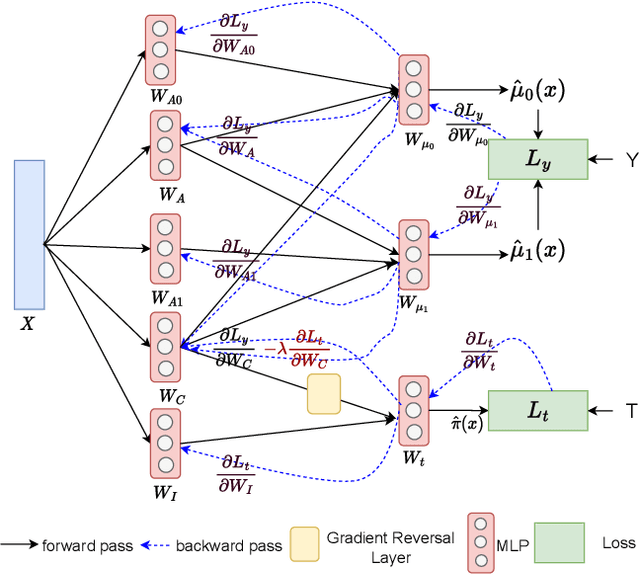
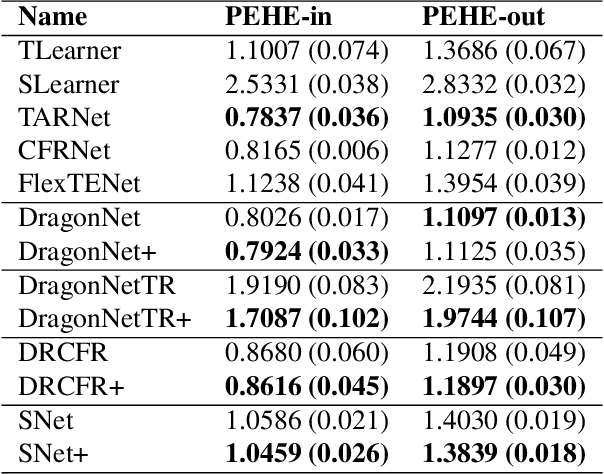
Abstract:Observational studies have recently received significant attention from the machine learning community due to the increasingly available non-experimental observational data and the limitations of the experimental studies, such as considerable cost, impracticality, small and less representative sample sizes, etc. In observational studies, de-confounding is a fundamental problem of individualised treatment effects (ITE) estimation. This paper proposes disentangled representations with adversarial training to selectively balance the confounders in the binary treatment setting for the ITE estimation. The adversarial training of treatment policy selectively encourages treatment-agnostic balanced representations for the confounders and helps to estimate the ITE in the observational studies via counterfactual inference. Empirical results on synthetic and real-world datasets, with varying degrees of confounding, prove that our proposed approach improves the state-of-the-art methods in achieving lower error in the ITE estimation.
COPER: Continuous Patient State Perceiver
Aug 05, 2022

Abstract:In electronic health records (EHRs), irregular time-series (ITS) occur naturally due to patient health dynamics, reflected by irregular hospital visits, diseases/conditions and the necessity to measure different vitals signs at each visit etc. ITS present challenges in training machine learning algorithms which mostly are built on assumption of coherent fixed dimensional feature space. In this paper, we propose a novel COntinuous patient state PERceiver model, called COPER, to cope with ITS in EHRs. COPER uses Perceiver model and the concept of neural ordinary differential equations (ODEs) to learn the continuous time dynamics of patient state, i.e., continuity of input space and continuity of output space. The neural ODEs help COPER to generate regular time-series to feed to Perceiver model which has the capability to handle multi-modality large-scale inputs. To evaluate the performance of the proposed model, we use in-hospital mortality prediction task on MIMIC-III dataset and carefully design experiments to study irregularity. The results are compared with the baselines which prove the efficacy of the proposed model.
Multiscale CNN based Deep Metric Learning for Bioacoustic Classification: Overcoming Training Data Scarcity Using Dynamic Triplet Loss
Mar 27, 2019
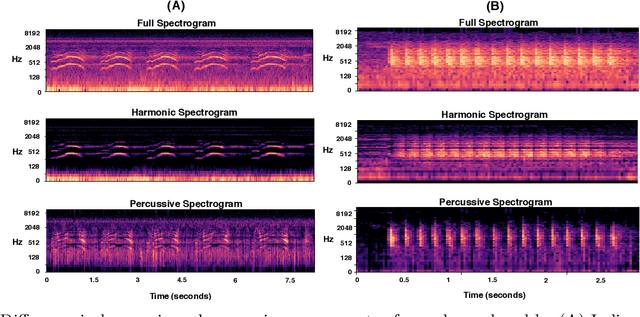

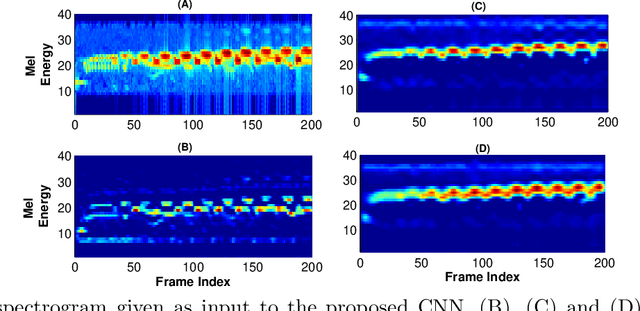
Abstract:This paper proposes multiscale convolutional neural network (CNN)-based deep metric learning for bioacoustic classification, under low training data conditions. The proposed CNN is characterized by the utilization of four different filter sizes at each level to analyze input feature maps. This multiscale nature helps in describing different bioacoustic events effectively: smaller filters help in learning the finer details of bioacoustic events, whereas, larger filters help in analyzing a larger context leading to global details. A dynamic triplet loss is employed in the proposed CNN architecture to learn a transformation from the input space to the embedding space, where classification is performed. The triplet loss helps in learning this transformation by analyzing three examples, referred to as triplets, at a time where intra-class distance is minimized while maximizing the inter-class separation by a dynamically increasing margin. The number of possible triplets increases cubically with the dataset size, making triplet loss more suitable than the softmax cross-entropy loss in low training data conditions. Experiments on three different publicly available datasets show that the proposed framework performs better than existing bioacoustic classification frameworks. Experimental results also confirm the superiority of the triplet loss over the cross-entropy loss in low training data conditions
 Add to Chrome
Add to Chrome Add to Firefox
Add to Firefox Add to Edge
Add to Edge